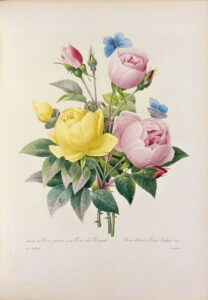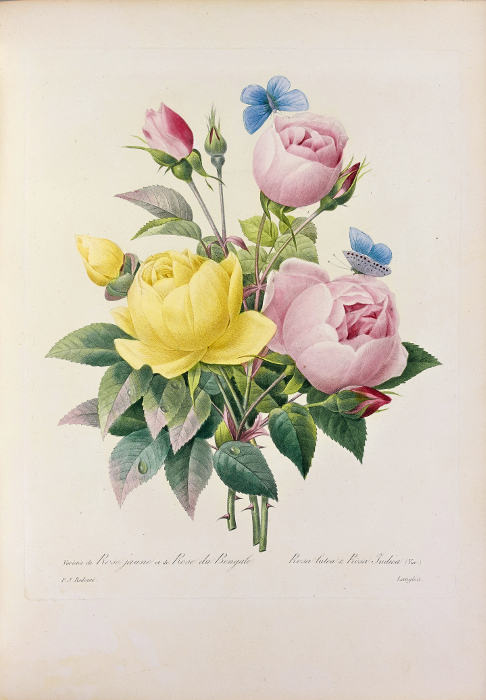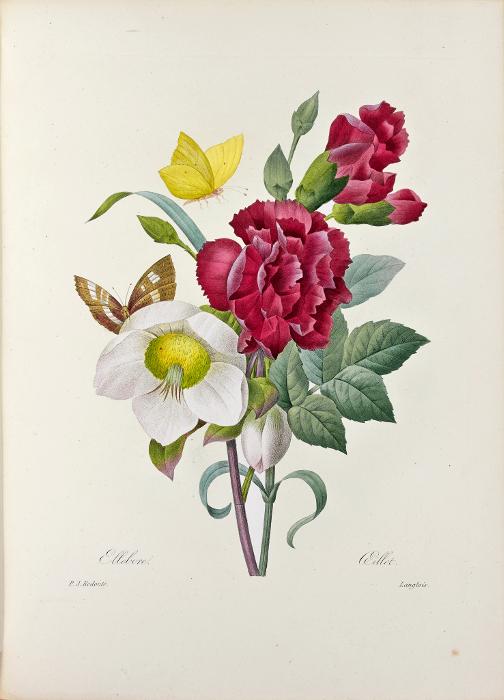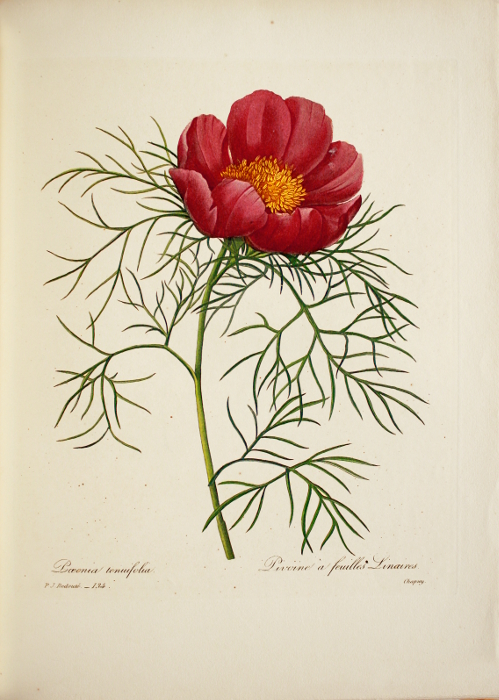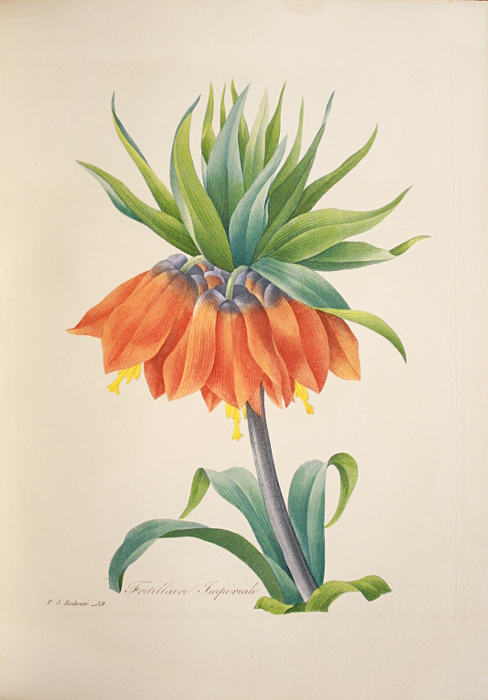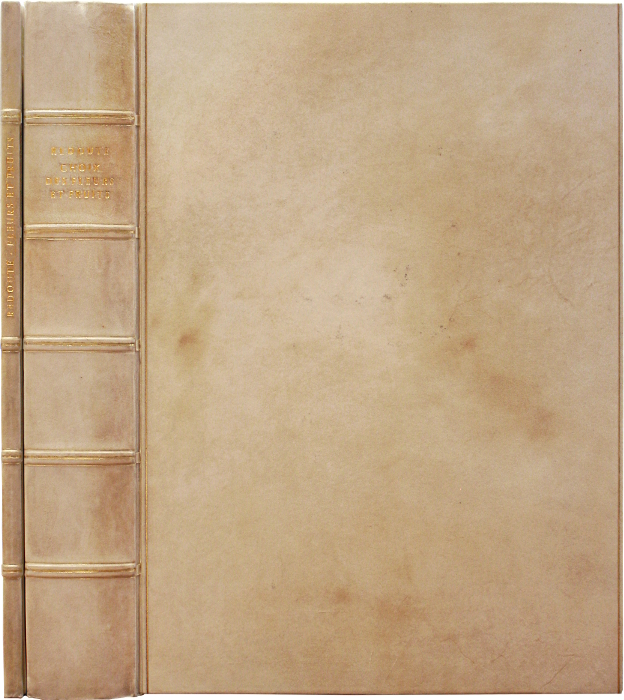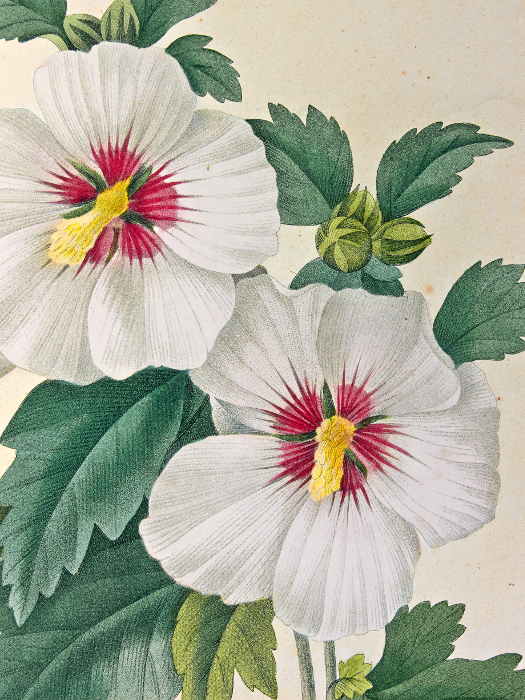Paris, Ernest Panckoucke, [1827-1833].
2 volumes 4to of (3) ll., 16 pl. of fruits, (1) l., 16 pl. of roses, (1) l., 6 pl. of de bunches, (1) l., 106 pl. of flowers, that is to say 144 plates and one volume of Table alphabétique et explicative of 20 pp. Ivory vellum. Modern binding.
350 x 257 mm.
First edition and first issue. Hunt, Redouté Catalogue, 21; Stafleu, in ditto, pp. 29-30; Nissen 1591; Graesse. Trésor de Livres rares, VI, 58; Pritzel, 7456; Brunet, IV, 47.
“A superb work, one of the finest of all collections of flower prints, showing to full advantage the brilliancy of colour printing” (Dunthorne).
One of the rarest and most attractive books illustatred by Redouté with 144 full page engravings printed in colours and finished by hand. They are engraved by Langlois, Bessin, Chapuy and Victor.
Le choix des plus belles fleurs, published in 36 parts between March 1827 and June 1833, is a selection of the most beautiful original engravings by Redouté. The last part contains the alphabetic table by D. M. Guillemin with the botanical names of plants and short notes on their history or their growing. The work has been republished several times.
Pierre Joseph Redouté, the “Raphael of flowers”, was appointed by queen Marie-Antoinette painter and drawer of her cabinet and her private professor.
Redouté, during the lessons he was giving her, was gathering in vases from Japan or Sevres the most beautiful flowers of Versailles greenhouse, and, under the queen’s eyes, he would paint a splendid watercolor in less than an hour.
“The comte de Chambord was owning, coming from the duchesse de Berry, five or six of these watercolors which are masterpieces and largely surpass the Van Huysum and the Saint-Jean, whatever their perfection are. In 1792, Redouté was appointed drawer of the Académie des sciences, and the same title was confirmed to him when the Institute was founded. To the magic of color and drawing, he combined the knowledge of the naturalist that Van Huysum was not even suspecting, these plants, these flowers, with which he would do with his palette fine wonders, he knew them as well as Linné; with him the painter was coupled with a scholar and a deep observer. Only worried about his art, he never took part into politics, he was Jospehine and after that Marie-Louise’s professor, like he was the one of Marie-Antoinette. He also taught his art to the duchesse de Berry, to queen Marie-Amélie, to Madame Adélaïde, and, besides the crowned heads and princesses, he also had as a pupil a certain number of distinguished women such as Madame Panckoucke, Mademoiselle Arson, Madame Chantereine. In 1822, Louis XVIII appointed him professor of vegetal iconography of the King’s garden, in place of Van Spaendonck. From 1827 to 1833, Redouté completed with happiness and talent a great work of which only the title indicates the character and the value; it is the ‘Choix des plus belles fleurs prises dans différentes familles du règne végétal, de quelques branches des plus beaux fruits, groupés quelquefois et souvent animés par des insectes et des papillons’. The great success of this publication, which editions quickly ran out, convinced the author to publish, from 1835, the ‘Collection de jolies petites fleurs choisies parmi les plus gracieuses productions de ce genre, tant en Europe que dans les autres parties du monde’.”
A precious copy of this superb and rare collection illustrated by the painter.
